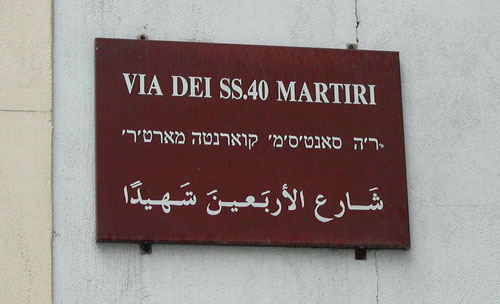See the hilarious street sign.
Why is it hilarious? Well, if you can read Hebrew you don’t have to ask. For the rest of you, here is the story.

Palermo, where this sign hangs, was home to a large and lively Jewish community in the middle ages. Then, in 1492, the Catholic Monarchs (Ferdinand and Isabella, those of Columbus fame) found the time on their busy schedules to decree that all Jews be expelled from all their dominions, Sicily included, and that was that – even today the only Jews to be seen on this lovely island are tourists. Moslems didn’t fare much better, having been expelled in the 13th century.
And it is to this history that we owe the sign, which marks one of the streets of the medieval Giudecca – the Jewish Ghetto. Someone had the neat idea of adding Hebrew and Arab names to streets in that area, in acknowledgement of their history. So far so good.
The joke, however, is that with not a single Jew living there, the Sicilian sign makers evidently relied on someone sending them the Hebrew version of the street name – which they then diligently proceeded to copy, without any idea of how to read the Hebrew script. The result is a hilarious mess of typos, most notable the replacement of the letter Yod with an apostrophe, no less than six times in this example.
I have no idea if the Arabic is any better…






Those are mostly not Hebrew words, either. Santisimi? Martiri?
The Arabic says something like “Shara AlArba’in Shahada” which can be translated into “Street of the Forty Martyrs”. I don’t know if it’s written properly, but it’s understandable. Anyway, at least they actually translated to Arabic, instead of producing a meaningless transliterations, like the did with Hebrew.
Thanks Amitai for clearing this up! Indeed, Chip, the Hebrew is just a transliteration of the Italian words (which stands for street of the 40 saintly martyrs).